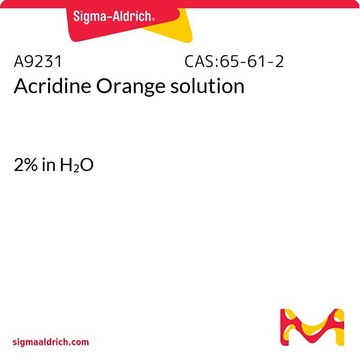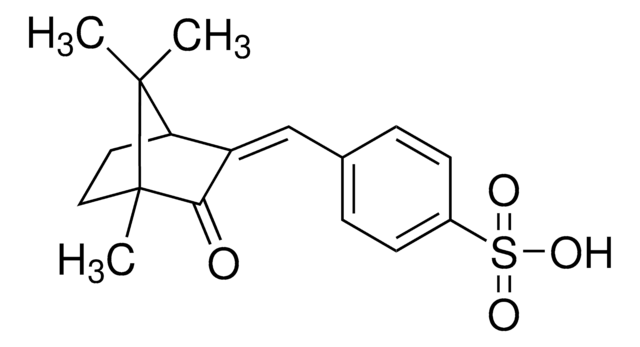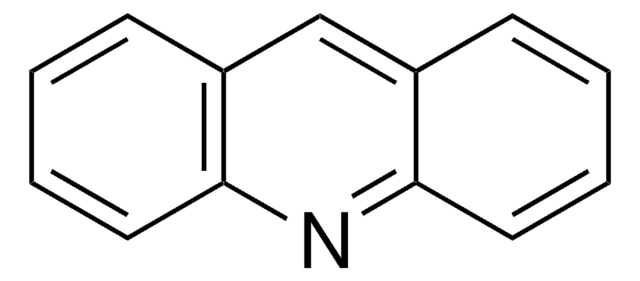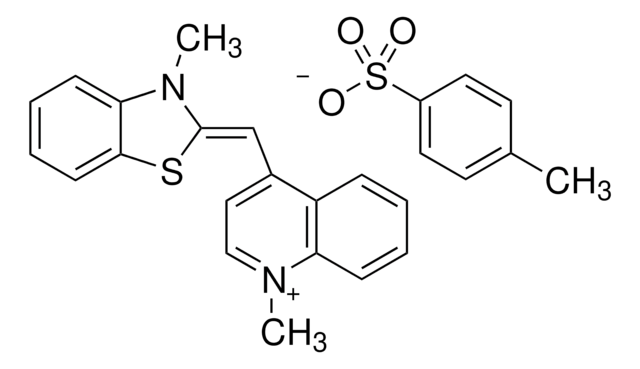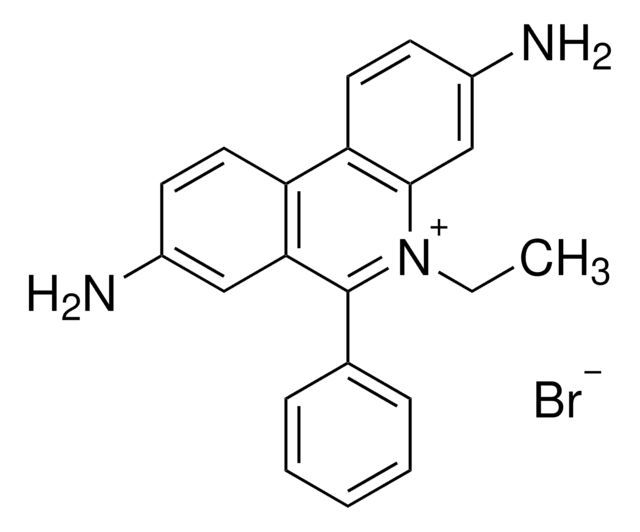A6014
Acridine Orange hemi(zinc chloride) salt
For nucleic acid staining in cells or gels
Sinónimos:
3,6-Bis(dimethylamino)acridine hydrochloride zinc chloride double salt, 3,6-Bis(dimethylamino)acridinium chloride hemi(zinc chloride salt), Basic Orange 14
About This Item
Productos recomendados
Nivel de calidad
Línea del producto
BioReagent
Formulario
powder
composición
Dye content, ~80%
técnicas
nucleic acid detection: suitable
solubilidad
ethanol: 2 mg/mL
4 mg/mL (2-methoxyethanol (EGME))
water: 6 mg/mL (Forms a clear, dark orange or amber solution at 1mg/mL.)
idoneidad
suitable for flow cytometry
suitable for microscopy
temp. de almacenamiento
room temp
cadena SMILES
Cl[H].Cl[H].Cl[Zn]Cl.CN(C)c1ccc2cc3ccc(cc3nc2c1)N(C)C.CN(C)c4ccc5cc6ccc(cc6nc5c4)N(C)C
InChI
1S/2C17H19N3.4ClH.Zn/c2*1-19(2)14-7-5-12-9-13-6-8-15(20(3)4)11-17(13)18-16(12)10-14;;;;;/h2*5-11H,1-4H3;4*1H;/q;;;;;;+2/p-2
Clave InChI
RAHGLSRJKRXOSY-UHFFFAOYSA-L
¿Está buscando productos similares? Visita Guía de comparación de productos
Descripción general
Aplicación
- detection of nucleic acids separated by gel electrophoresis
- fluorescence and epifluorescence microscopy
- analysis of mitochondria and lysosomes by flow cytometry
- DNA staining in apoptosis studies
Características y beneficios
- 120 microM of acridine orange detects 25-50 ng of purified DNA per band in gels
- differential staining of single- and double-stranded polynucleotides
Principio
Producto relacionado
Palabra de señalización
Warning
Frases de peligro
Consejos de prudencia
Clasificaciones de peligro
Muta. 2
Código de clase de almacenamiento
11 - Combustible Solids
Clase de riesgo para el agua (WGK)
WGK 3
Punto de inflamabilidad (°F)
Not applicable
Punto de inflamabilidad (°C)
Not applicable
Equipo de protección personal
Eyeshields, Gloves, type N95 (US)
Elija entre una de las versiones más recientes:
¿Ya tiene este producto?
Encuentre la documentación para los productos que ha comprado recientemente en la Biblioteca de documentos.
Los clientes también vieron
Artículos
Fluorescence lifetime measurement is advantageous over intensity-based measurements. Applications include fluorescence lifetime assays, sensing and FLI.
Nuestro equipo de científicos tiene experiencia en todas las áreas de investigación: Ciencias de la vida, Ciencia de los materiales, Síntesis química, Cromatografía, Analítica y muchas otras.
Póngase en contacto con el Servicio técnico